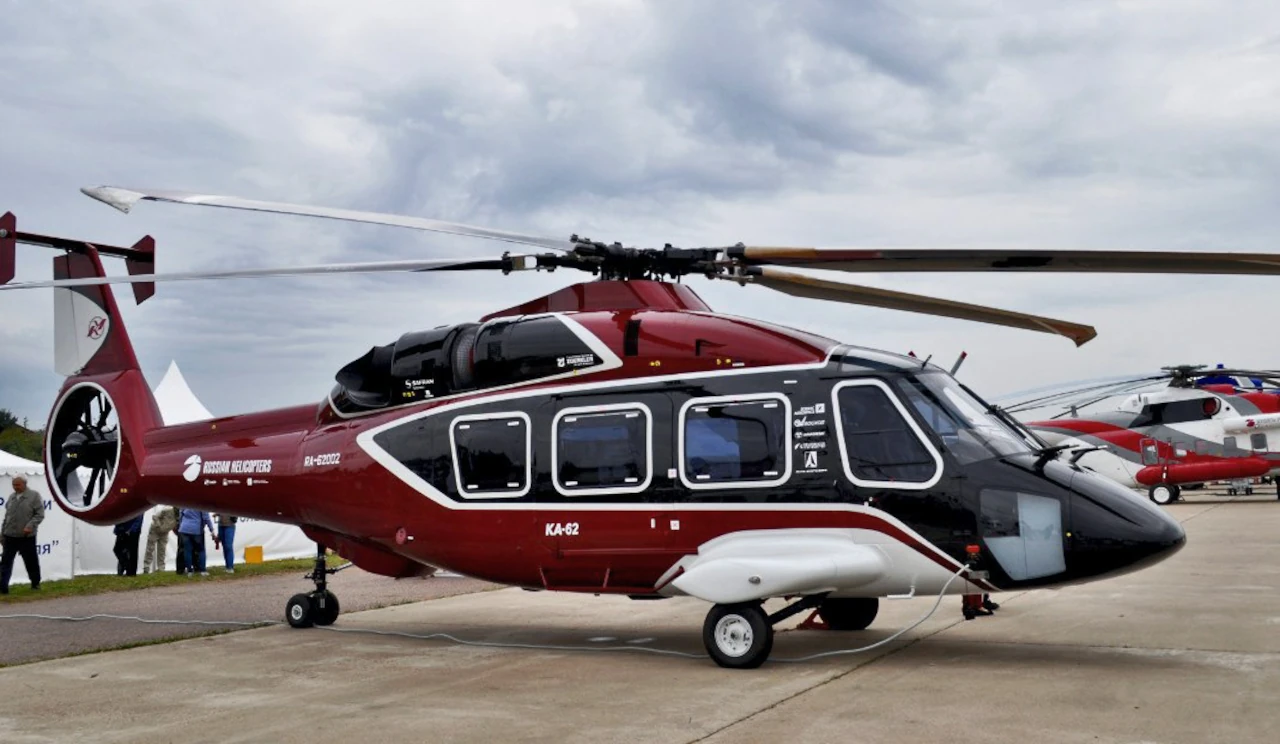The Russian Ministry of Industry and Trade has achieved a critical milestone in Russia’s import substitution efforts amid ongoing sanctions by launching a tender to develop a completely domestic version of the Kamov Ka-62 helicopter by December 2027. The project’s objective is to replace foreign components in the medium-twin helicopter, which has experienced numerous delays since its inception in the 1990s, with a contract value of 3.289 billion rubles (approximately $39.5 million). The tender, which is hosted on the “Roseltorg” electronic platform, will conclude on May 14. The annual funding allocations are 230 million rubles in 2024 and 1.5 billion rubles in 2025 and 2026.
The Ka-62 program was initiated in 1990 as a civilian version of the Ka-60 military helicopter; however, progress was slow for decades. The first working prototype flight took place in 2016, and certification was ultimately granted in November 2021 following 700 hours of flight testing. Despite the initial intention to commence serial production in 2022, delays were necessitated by the dependence on foreign components, such as composite materials, avionics, and French Safran Ardiden 3G engines. Russian aviation authorities suspended certification in anticipation of domestic replacements, as 60% of the helicopter’s components were still imported by 2022.
There are numerous significant obstacles associated with import substitution. The Ardiden 3G engines are being replaced with the Klimov VK-1600V, a domestic engine that is presently in development and has a power output of 1,776 horsepower. This replacement is a significant obstacle. Certification for the VK-1600V is anticipated to occur by 2025, following the start of ground tests in 2023. Furthermore, sanctions necessitated Russia to rebuild its composite manufacturing base, as over 50% of the airframe is composed of lightweight composite materials that were originally sourced internationally. Additionally, it is necessary to redesign the avionics and onboard systems, which comprise power supply, anti-icing, and cargo management components, to reduce dependence on Western-made components.
The complexity of these tasks is reflected in the revised timeline and funding. Earlier targets established by former Minister of Industry and Trade Denis Manturov, who intended for serial production to commence in 2025, have been extended to 2027. The current tender prioritizes phased work, with a budget of 230 million rubles for preliminary design and subsystem validation in 2024, approximately 1.5 billion rubles annually for prototype development and flight testing in 2025 and 2026, and certification and production readiness in 2027.
The Kamov Ka-62 mainly competes in the medium twin-engine helicopter segment, with a focus on roles such as passenger and cargo transport, medical evacuation, search and rescue, and utility missions such as oil and gas pipeline maintenance. Its prime competitors are Western helicopter variants, including the Eurocopter AS365 Dauphin, Leonardo AW139, Airbus Helicopters H160, and Sikorsky S-76D. These helicopters are well-established in the 6–7 ton class and provide comparable payload, range, and versatility. The Ka-62 was intended to serve as a low-cost, dependable, and low-maintenance alternative to these Western helicopters, to fill a gap in both civilian and potentially military markets.
At present, there is no publicly available information confirming that countries apart from Russia have purchased the Ka-62 in terms of international sales. The helicopter has been certified by the Russian civil aviation authorities and is intended for serial production, with a primary focus on domestic consumers. Russian Helicopters has indicated its intention to increase exports in the future, such as the development of an advanced Ka-62M variant specifically for export. However, there have been no reported concrete export orders or deliveries outside of Russia. At present, the Ka-62 is predominantly a Russian asset, although the company is actively involved in partnerships and component production agreements with countries such as India and Kazakhstan for other helicopter models.
Strategically, the Ka-62 would be positioned as a competitive option in the 6–7 ton helicopter class, alongside the Mi-8 and Mi-17 series, for both civilian and military markets, if successful import substitution were achieved. Early sales projections indicated that production would reach approximately 365 units by 2030; however, delays and the necessity for recertification have lowered expectations. The program has also been the subject of scrutiny as a result of a criminal investigation conducted in 2020, which alleged the misappropriation of 3.6 billion rubles during the development phase.
Russia’s broader initiative to achieve aerospace self-sufficiency is underscored by this procurement, which is consistent with comparable projects to domesticate other helicopter models, such as the Ansat and Mi-38. Conversely, the technical and logistical obstacles associated with substituting imported components indicate that sustained effort and resources will be necessary to meet the 2027 deadline. The results of this project will serve as a sizable indicator of Russia’s capacity to sustain and develop its helicopter industry in the face of contemporary geopolitical constraints.
Official Website of Youtube Channel – Altitude Addicts
